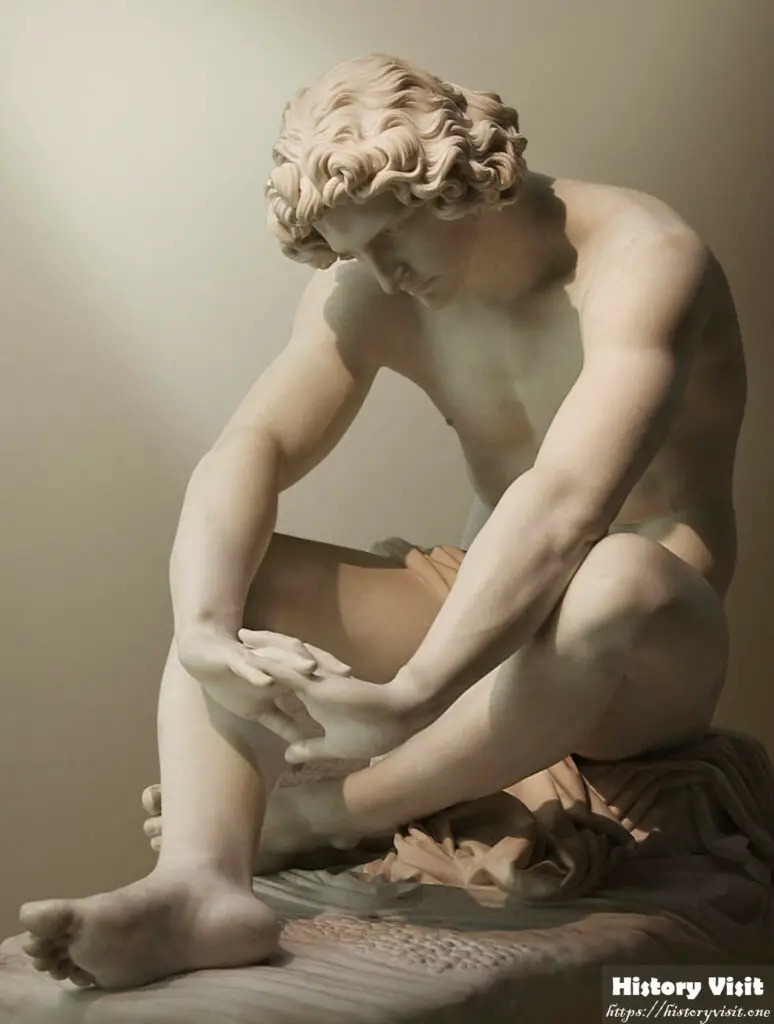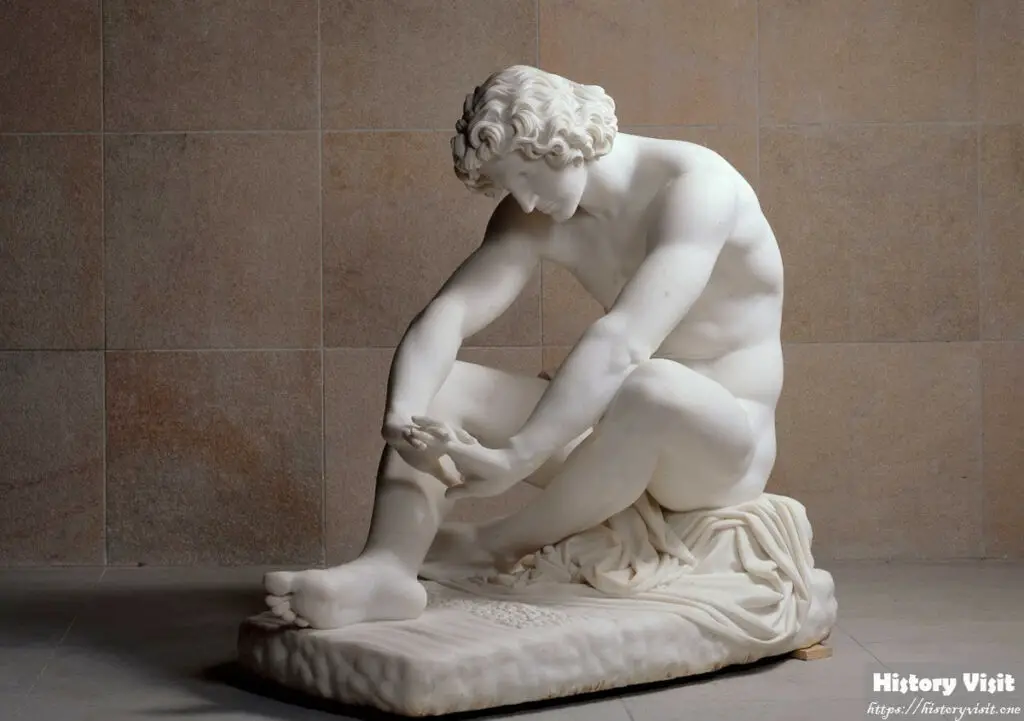Eternal Desolation: Revealing Jean-Joseph Perraud’s ‘Despair’ (1869)

In the vast realm of artistic expression, Jean-Joseph Perraud emerges as a sculptor whose works resonate with emotional depth and profound introspection. Among his masterpieces, ‘Despair’ (1869) stands as a testament to Perraud’s ability to capture the intricacies of the human psyche and translate them into tangible forms. As we embark on a journey to explore the life and artistic contributions of Jean-Joseph Perraud, unravel the story behind the creation of ‘Despair,’ and delve into the impact of this sculpture on the world of art, we find ourselves in the haunting presence of a work that transcends time and emotion.
Born in 1819 in Lyon, France, Jean-Joseph Perraud’s early life was marked by a deep connection to the arts. Nurtured in the vibrant cultural atmosphere of his hometown, Perraud displayed an early inclination towards sculpture. His journey as an artist took him to the École des Beaux-Arts in Paris, where he honed his skills under the guidance of prominent mentors. Before the creation of ‘Despair’ in 1869, Perraud had already established himself as a sculptor of considerable talent, receiving accolades for his earlier works that showcased his proficiency in depicting both classical and emotionally charged subjects.
Perraud’s artistic prowess extended beyond the realm of sculpture, encompassing painting and design. His multifaceted talents earned him recognition, and he was appointed a professor at the École des Beaux-Arts, where he imparted his knowledge to future generations of artists. Perraud’s ability to seamlessly blend classical techniques with a keen understanding of human emotion distinguished him as a sculptor of remarkable skill and sensitivity.

The genesis of ‘Despair’ in 1869 can be traced to Perraud’s exploration of the human condition. The sculpture, conceived during a period marked by societal upheavals and personal introspection, reflects Perraud’s desire to express the profound depths of despair that can envelop the human soul. The story behind the sculpture lies in the artist’s attempt to grapple with the existential angst that pervaded the cultural and intellectual milieu of the time.
‘Despair’ serves as an embodiment of the emotional tumult that gripped Perraud’s psyche. The choice to depict despair as a central theme reflects the artist’s engagement with the darker aspects of the human experience. Perraud sought to transcend the boundaries of conventional artistic representation, delving into the realm of raw emotion and existential contemplation. The creation of ‘Despair’ became a cathartic process for Perraud, allowing him to channel his inner turmoil into a tangible form that would resonate with viewers.

The dedication to building ‘Despair’ is a testament to Perraud’s commitment to conveying the complexities of human emotion. The sculpture, carved from marble, bears the hallmarks of meticulous craftsmanship. Perraud’s skill is evident in the detailed rendering of the figure’s anatomy, the texture of the draped fabric, and the subtle nuances of facial expression. The deliberate choice to create a sculpture that elicits a visceral response required a mastery of form and a profound understanding of the emotional spectrum.
The impact of ‘Despair’ on the world of art is profound, transcending its immediate context to become a timeless exploration of the human psyche. Perraud’s ability to infuse a cold, inert material like marble with palpable emotion sets ‘Despair’ apart as a work that goes beyond mere representation. The sculpture, exhibited at the Salon in Paris, garnered attention for its unconventional approach and marked Perraud as an artist willing to venture into the uncharted territories of human emotion.
‘Despair’ challenged conventional notions of beauty and aesthetics, inviting viewers to confront the darker recesses of the human soul. Its impact reverberated through artistic circles, influencing subsequent generations of sculptors who sought to engage with emotion in a raw and unfiltered manner. Perraud’s contribution to the world of art extended beyond the physicality of the sculpture, sparking conversations about the role of art in reflecting the complexities of the human experience.

In conclusion, Jean-Joseph Perraud’s ‘Despair’ (1869) stands as a haunting exploration of the emotional depths that define the human condition. Perraud’s artistic journey, marked by his earlier works and culminating in the creation of ‘Despair,’ showcases a sculptor unafraid to grapple with the complexities of existential angst. The impact of ‘Despair’ on the world of art lies not only in its immediate reception but in its enduring ability to resonate with those who encounter its silent, contemplative presence. As we reflect on the profound legacy of ‘Despair,’ we recognize Perraud’s contribution to the evolution of sculptural expression, forever leaving an indelible mark on the canvas of human emotion.



Eternal Desolation: Revealing Jean-Joseph Perraud’s ‘Despair’ (1869) – History Visit
mpziyxbqpd